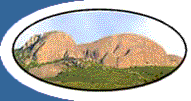Wild pigs threaten rare tortoise
2009-09-17
THE impact of Eurasian wild pigs on the Boland’s indigenous geometric tortoise population and remaining patches of renosterveld is highlighted in a new popular science book that focuses on the damage being done to the environment by alien invasive species. Invaded: The Biological Invasion of South Africa is written by science journalist Leonie Joubert and has been published thanks to the support of the DST-NRF Centre of Excellence for Invasion Biology (CIB) at Stellenbosch University (SU). Invaded tells the stories of how species such as wattles, the Mediterranean mussel, the Japanese oyster, the triffid weed, Argentine ants and European wasps have traversed the borders of their natural habitats and made their way into South Africa over the past 300 years. The issue of Eurasian wild pigs are highlighted in a chapter entitled “The Invisible Sounder”. Small groups of these pigs were released around forestry stations across the Western Cape between 1926 and 1950 by the then Department of Forestry, in an effort to curb the damage being done to pine tree plantations by the local emperor moth. Self-sustaining colonies soon established themselves in the vicinity of the release sites, including the plantations around Stellenbosch, Swellendam, Franschhoek and Tulbagh, and also escaped beyond their borders. According to Joubert, limited data is available on their current numbers and geographic range. “Nevertheless, the mess they leave in their wake is clear evidence that these animals are real troublemakers in many parts of the Cape, and especially in the last 4% left of the original west coast renosterveld.” Pristine renosterveld areas in the vicinity of Wellington and Tulbagh regularly have sounders of pigs moving through them at night. The pigs’ success is partly because they eat just about anything. “During the summer and winter months, their preference for foraging in agricultural lands has soured their informal relationship with farmers, and in autumn, when food stocks are low on farmland, they head into conservation areas to forage. “One of renosterveld’s many treasures is its rich diversity of endemic bulb plants, which the pigs adore,” Joubert explains the concern of conservationists. “In an analysis of the stomach contents of pigs in the Wellington region, these geophyte bulbs were the one source of food that appeared consistently high in their diets throughout the summer, autumn and winter months,” she says. “Since so few genetically viable patches of renosterveld remain, this marauding of pigs could prove fatal to many species on the long run.” Another big concern is the possible impact of the pigs on the survival of the endangered geometric tortoise, which is only found in renosterveld. The manager of a renosterveld conservancy near Paarl has found many geometric tortoise shells. “Each had a chunk taken out of the side of the shell as if someone had taken a bite out of an apple,” Joubert says. Although no one has ever seen a pig eating a geometric tortoise, no other feasible explanation has been put forward.
Ground nesting birds, reptiles and amphibians are known sources of food for these animals elsewhere in the world. According to Joubert, Western Cape conservationists are looking into the feasibility of eradicating the boar from the Voëlvlei nature conservation area near Hermon, hopefully the first of a province-wide drive to control the problem.
More
News
|


